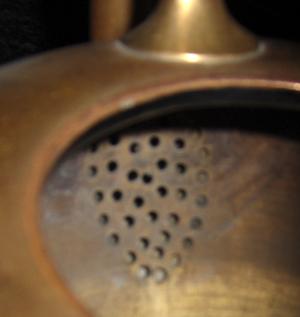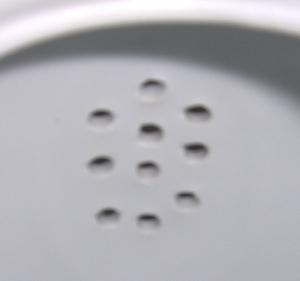18 hours ago, Anna N said:That would do the trick. Contrary to the usual situation an almost identical spoon also by the same maker is available on the Amazon.ca site for a mere four dollars. Added it to my cart. I thought $17 was a bit of a stretch. Thank you. I think I remember coming across a caper spoon at some point.
The spoon you describe in you original post is a "mote spoon" - I think I still have one somewhere in my junk.
It has a regular teaspoon bowl with perforation and the other end is a pointy thing for unplugging the tea spout when clogged with tea leaves.
As I recall, it was a Victorian thing as they seemed to have a table utensil for everything.
I'll see if I can find an example.
6/2 - OK - I was off by a century. It was the Georgians in the later third of the 18th century who devised the mote spoon or mote skimmer. This lasted into the Regency period until someone came up with the idea of the "elegant" tea strainer to be held over the cup while pouring, rather than use a spoon to fish the various bits out of the cups after pouring.
Later, beginning in about 1850, most teapot makers began making pots with perforations between the bowl and the spout so there was less debris going into the cup IF ONE USED HIGH GRADE FULL-LEAF TEA.
However, Victorians, who loved vast sets of flatware, with numerous utensils for every purpose imaginable, continued to offer the mote spoons in the "full sets" of tableware.
Just one more spoon in a bewildering array. There were almost as many different types of spoons in sets of high end tableware as there were forks - and that is saying a lot as some place setting included 8 forks.
Place/ice cream spoon, teaspoon, dessert spoon, cream soup spoon, bouillon spoon, pudding spoon, demitasse spoon and sometimes a bon bon spoon if sweets were to be served at table. All slightly different in size and shape.
I used to have a poster with the diagrams of place settings for Victorian era, Edwardian era, the 1920s, 1930s, 1940s and ending with the "hippie era" showing paper places and plastic knife, fork and spoon.
Here are two examples of self-straining teapots - My great grandmother's Gorham copper teapot 1881 and a porcelain teapot, English, 1910.



